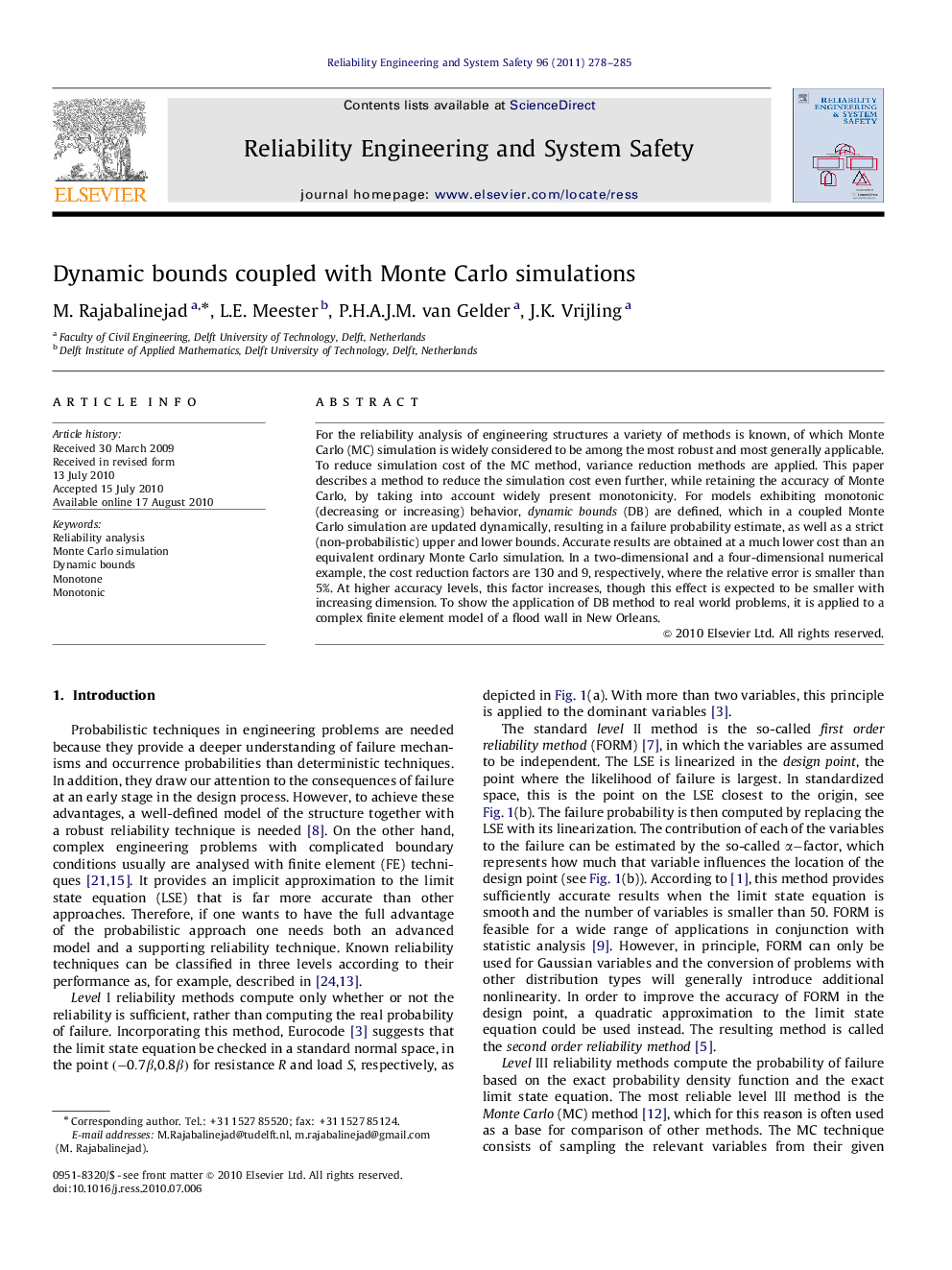| کد مقاله | کد نشریه | سال انتشار | مقاله انگلیسی | نسخه تمام متن |
|---|---|---|---|---|
| 806438 | 905335 | 2011 | 8 صفحه PDF | دانلود رایگان |

For the reliability analysis of engineering structures a variety of methods is known, of which Monte Carlo (MC) simulation is widely considered to be among the most robust and most generally applicable. To reduce simulation cost of the MC method, variance reduction methods are applied. This paper describes a method to reduce the simulation cost even further, while retaining the accuracy of Monte Carlo, by taking into account widely present monotonicity. For models exhibiting monotonic (decreasing or increasing) behavior, dynamic bounds (DB) are defined, which in a coupled Monte Carlo simulation are updated dynamically, resulting in a failure probability estimate, as well as a strict (non-probabilistic) upper and lower bounds. Accurate results are obtained at a much lower cost than an equivalent ordinary Monte Carlo simulation. In a two-dimensional and a four-dimensional numerical example, the cost reduction factors are 130 and 9, respectively, where the relative error is smaller than 5%. At higher accuracy levels, this factor increases, though this effect is expected to be smaller with increasing dimension. To show the application of DB method to real world problems, it is applied to a complex finite element model of a flood wall in New Orleans.
Journal: Reliability Engineering & System Safety - Volume 96, Issue 2, February 2011, Pages 278–285